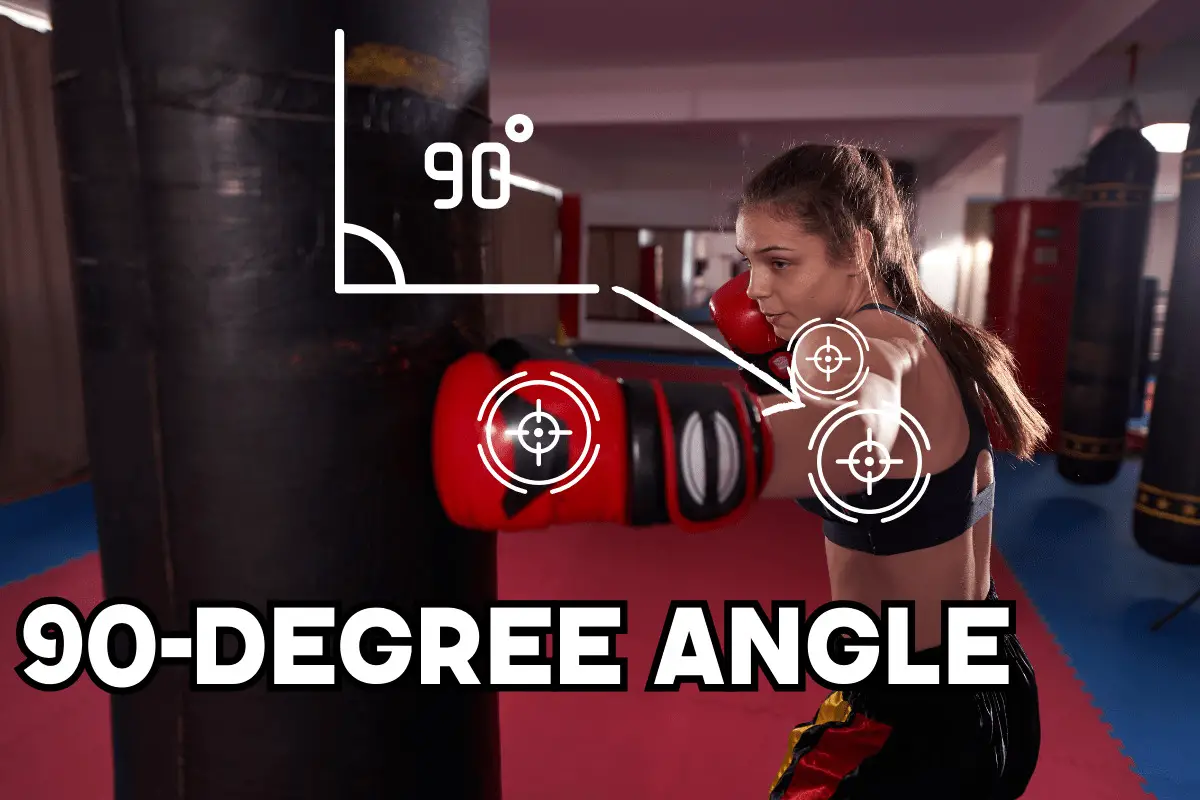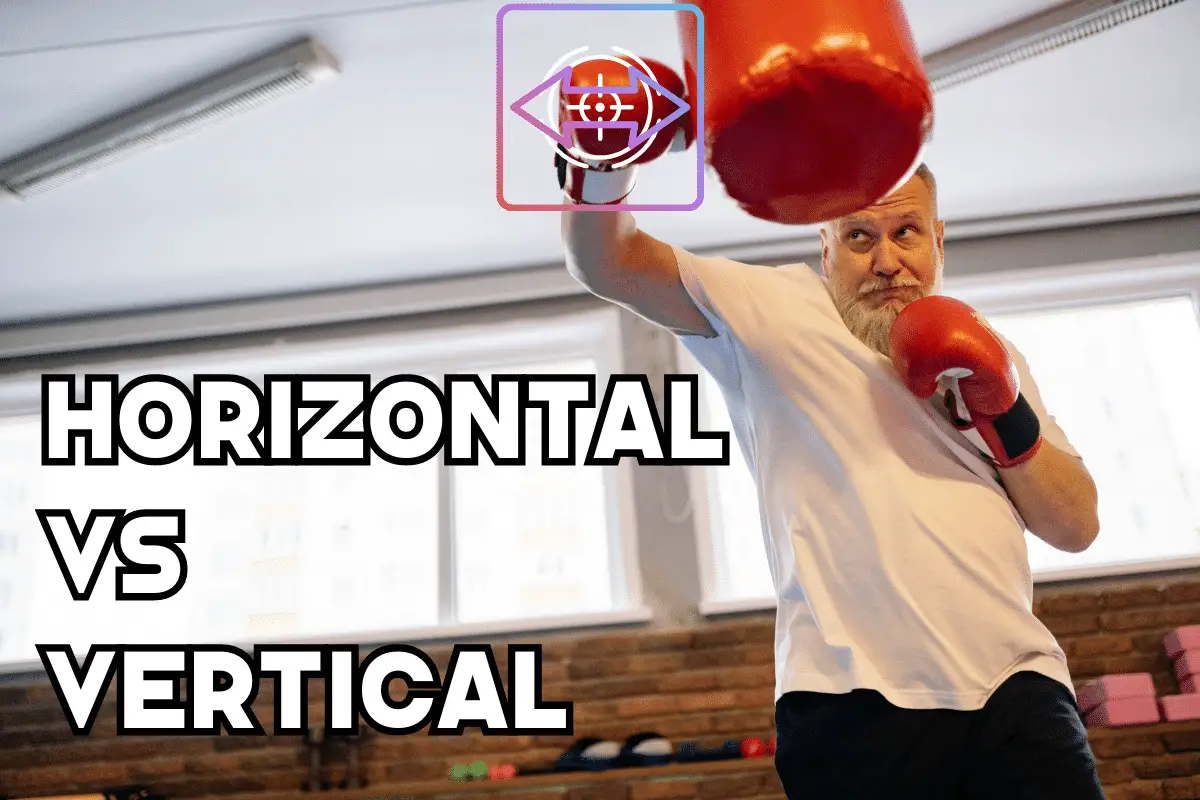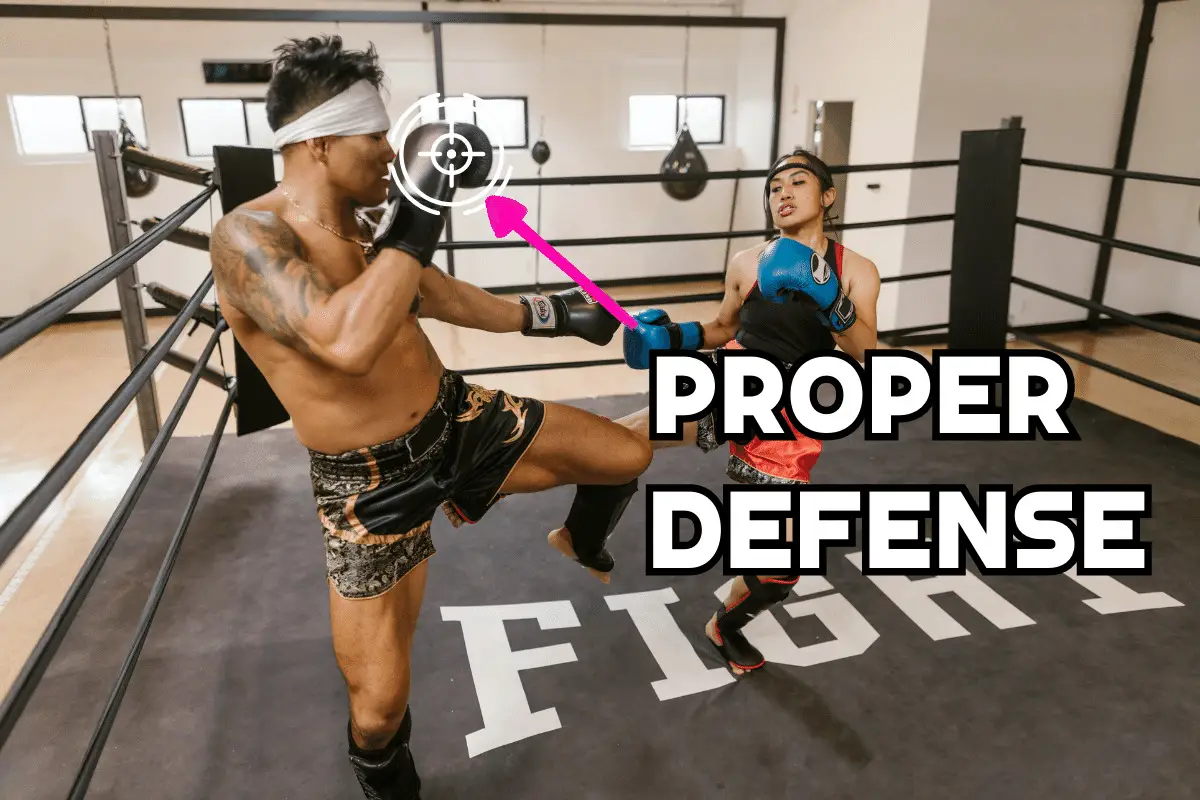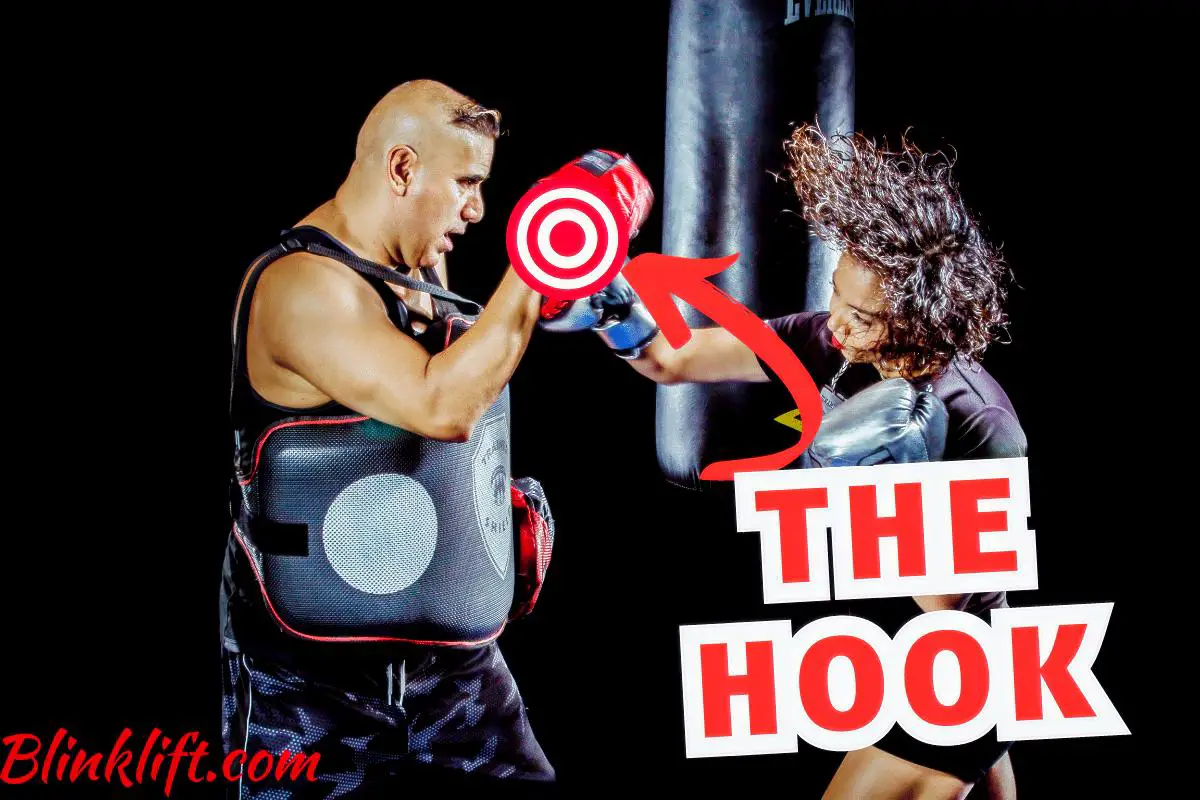We’re very lucky individuals because you and I have something in common; we both want to perfect parts of our Muay Thai fighting abilities. Let me give you an example. We both want to perfect our Hooks, which is one of the most influential and powerful punches in Muay Thai.
In Muay Thai, the term “Hook” typically refers to a Hook punch, which is a powerful striking technique used to attack an opponent’s head or body from a curved angle. The Hook punch is executed with a bent arm and a rotational movement of the body. It is a versatile and effective technique that can be used to deliver significant impact and disrupt an opponent’s defenses.
What this article will be about is perfecting the Hook. Frankly, most Muay Thai fighters will never step out of their comfort zones as far as learning how to perfect and practicing that same knowledge. In fact, some of the people reading this article might never put the things we’ll learn into practice, which is a shame.
My point is that you can be better than most Muay Thai fighters simply by implementing what you’ll learn here, which isn’t as difficult. Perfecting your Hook really isn’t that demanding, as it only takes a few tweaks to your technique, which we’ll cover in this article.
So now, let’s dive into the first part of this article, which is going to present the tweaks you want to implement into your Hook technique to perfect it.
How to Throw the Perfect Hook in Muay Thai
I’m glad you made it to the most important part of this article. In the upcoming sections, we’ll review things you want to know and understand to perfect your Hook.
We’ll go through 6 points (yes, that’s it) that considering you put them all into practice, will make your Hook punch more powerful, aggressive, quick, and effective.
So without further introduction, let’s dive into the first point: Arm Position.
#1 – Arm Position
The first point we’ll review is the position of your arm when throwing the Hook punch. This is one of the most critical points to understand if you want to generate more power with your strike, which is what we all want I assume.
Bend your arm at the elbow to create a 90-degree angle. The lead hand is typically used for the Hook, so the arm that corresponds to your lead leg will be the one delivering the punch.
So if you’re in the Orthodox stance (left foot forward) your lead hand is your left hand. Likewise, if you’re using the Southpaw stance (right foot forward) your lead hand is your right hand. So although you might be right-handed, you’ll be able to generate more force with your left hand, as it’s your lead hand.
The best example of this is Mike Tyson, who uses the Orthodox stance; however, his left Hook is one of the most powerful strikes in the history of Boxing. And still, you can generate quite a lot of force with your right Hook as well.
So make sure to bend your arm at a 90-degree angle at your elbow. This will be ideal for generating more power, making your punch faster, and ensuring it’s more effective and useful.

Learning Muay Thai can be difficult. If you want to know whether you should learn Muay Thai, follow this link.
#2 – Fist Alignment
The second point we’ll review is fist alignment. Now this is a controversial topic, to say the least. Many fighters believe your fist should be horizontal when executing the Hook. However, some believe it should be vertical.
However, the answer is quite simple; This is totally personal preference. So you might prefer your fist to be horizontal while your Muay Thai coach will tell you to keep it vertical. You want to ensure you do what’s comfortable for you. But both ways are valid and effective.
Keep your wrist straight and align your knuckles, specifically the middle and index fingers, to strike the target. The lower part of your fist should make contact with the side of your opponent’s head or body.

#3 – Targeting
Next up, let’s review which part of your opponent’s body you want to hit. This is important to understand, so pay close attention. Whether you’re looking to cause body or head damage, the Hook is a suitable choice. Likewise, it’s one of the most powerful types of punches in Muay Thai, making it more attractive to martial arts disciples, including in Karate, Kung Fu, and even MMA, Boxing, and Kickboxing.
Aim to strike the side of your opponent’s head or the area around their ribs or liver, depending on the situation and your intended target.
This is the simple explanation of where you should hit with the Hook. If you hit your opponent’s head with a fierce Hook, he’ll see stars soon after. Likewise, if you hit your opponent’s ribs or liver, he’ll have an extremely difficult time catching up his breath and not feeling the immense pain.
So these are the two most sensitive spots to aim your Hook into.
You’ll actually be surprised at how painful it can be to get hit with a fierce Hook to the body. You’ll be surprised at the number of fights that ended with a “Body Knockout.” Here, look for yourself.
#4 – Follow-through and Recoil
Following your punches through is what many fighters miss doing. We’ll also review a key point that many fighters tend to forget in point #6; And still, many Muay Thai fighters tend to forget to follow through, which affects their power and effectiveness.
Once you make contact, follow through with the punch to maximize its effectiveness. After the strike, quickly recoil your arm back to your guard position to defend against counterattacks.
How do you follow through? You maximize your Hook’s range by pushing your fist to your opponent once you make contact. Even if you hit your opponent’s guard, you want to follow through to ensure he won’t feel comfortable countering back.
#5 – Body Rotation
The most important thing you want to do to generate more power with your punches is body rotation. Actually, most Muay Thai fighters have this down. However, if you don’t, you’ll get beaten by most fighters, which you want to avoid.
Start by rotating your hips and shoulders in the direction of the punch. This rotation generates power and allows you to transfer your body weight into the strike.
I’ve started to experiment with rotating my body to the other side of the Hook before I rotate it to the side of the punch, which allows me to generate more power. Let’s say you want to throw a fierce left Hook (to the right), you pivot your body to the left before you follow through with the left Hook to the right. Here’s what that would look like:
Before we continue, if you want to start training Muay Thai at your home, I wrote a complete guide to do just that; so follow the link if you want to become a solid Muay Thai fighter from your home!
#6 – Defense
The last point we’ll review is going to be about defense. This is the primary point fighters tend to forget about, as attacking is shiny and fun. However, once you’re either sparring or in a real fight, you won’t be able to get away with not defending yourself.
You want to keep your guard up when throwing the Hook punch, whether it’s with your dominant or non-dominant hand. If you throw a left Hook, you must keep your right hand up to protect your face, as your opponent is more likely to attack you when you’re most vulnerable.

So make sure not to forget about defense when executing any offensive move. This is the point that will differentiate the okay and the excellent fighters; you’ll see who’s making sure to defend himself when a fight occurs, whether in sparring, competition, or any other encounter.
Hook Combinations in Muay Thai
Combinations are an exceptionally important skill to understand and practice in Muay Thai. You want to ensure you’re using them properly, which, in turn, will do a few things. First, combinations allow you to be more versatile and unexpected, meaning that your opponent will find it difficult to read your next moves.
Secondly, you’ll cause more damage in less time, as combinations alchemize different moves to create a powerful set of offensive moves.
And thirdly, you’ll do all that in less time, as you’ll punch consecutively.
Here are some of the best Muay Thai combinations that involve the hook:
- Jab-Hook:
- Start with a quick jab using your lead hand.
- Follow up immediately with a powerful hook punch from your lead hand, targeting your opponent’s head or body.
- This combination can disrupt your opponent’s guard and set up further strikes.
- Jab-Cross-Hook:
- Begin with a jab using your lead hand.
- Follow up with a cross punch using your rear hand for added power.
- Finish the combination with a hook punch from your lead hand, delivering it to the side of your opponent’s head or body.
- This combination allows you to mix up straight punches with a hook to create angles and generate power.
- Lead Hook-Rear Kick:
- Start with a lead hook punch using your lead hand.
- Immediately after the hook, transition into a powerful rear kick, aiming for your opponent’s body or legs.
- This combination blends punches and kicks, utilizing the hook to create an opening for the rear kick.
- Lead Uppercut-Hook-Cross:
- Begin with a lead uppercut using your lead hand, targeting your opponent’s chin or body.
- Follow up with a hook punch from your lead hand, striking the side of your opponent’s head or body.
- Finally, execute a cross punch with your rear hand, adding power to the combination.
- This combination focuses on upper-body strikes, utilizing the lead uppercut to set up the hook and cross.
- Rear Hook-Lead Elbow-Rear Knee:
- Start with a rear hook punch, targeting your opponent’s head or body.
- Immediately transition into a lead elbow strike, utilizing the sharp point of your elbow to attack.
- Finally, follow up with a powerful rear knee strike, driving it into your opponent’s midsection.
- This combination incorporates both punches and close-quarters strikes, maximizing the impact.
Remember, these combinations are just a starting point, and you can modify and adapt them based on your fighting style, skill level, and specific situation. It’s crucial to practice these combinations under the guidance of a qualified Muay Thai instructor to ensure proper technique, timing, and execution.
Hook Variations
For the last section of this article, we’ll review a few Hook variations you want to know about. Now, this is important to understand if you want to ensure your skills are dynamic and versatile. I hope you understand the importance of being as dynamic of a fighter as possible, especially in self-defense and street fights.
- Lead Hook
- Rear Hook
- Body Hook
- Head Hook
- Step-in-Hook
- Check Hook
- Overhand Hook
- Upward Hook
- Double Hook
- Long Hook
- Short Hook
Lead Hook: A Hook with your lead hand
Rear Hook: A Hook with your rear hand
Body Hook: A Hook to the body
Step-in-Hook: Step-in followed by a Hook
Head Hook: A Hook to the head
Double Hook: Two consecutive Hooks (for confusion)
Long Hook: A Hook with a full arm extension
There are many variations, but all of them are built on the fundamentals we’ve covered. Therefore, I want you to begin implementing and practicing the points I listed in this article. Start slowly and amp up the pace once you feel comfortable.
You’ll soon build muscle memory and won’t have to think about technique when you throw Hooks, or any other type of strike for that matter.
If you want to know whether Muay Thai is an effective martial art for different purposes, follow this link.
Final Words
The Hook is one of the leading punches in Muay Thai. It’s a side punch that’s considered to act as a finishing move (Knockout Move) as it allows you to transfer tons of damage to your opponent’s face or body.
Indeed, you can target either your opponent’s face or body with the Hook, which allows you to be more versatile. Versatility is an incredibly important characteristic to have if you’re looking to become an excellent fighter; so it’s definitely important you understand where to target and when.
I want you to take action and put on some boxing gloves and start practicing. This article means nothing without action-taking. Hence, you must practice everything you’ve learned thus far.
Good luck!
If you’re interested in reading more about punches, follow this link to learn about the best types of punches in Muay Thai and how to execute each one.
Here are other articles you’d enjoy reading:
The Jab – Muay Thai Complete Breakdown
How to Perfect Your Muay Thai Fighting Stance – Guide
9 Amazing Benefits Muay Thai Training Will Give You

